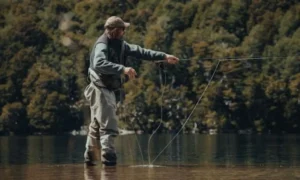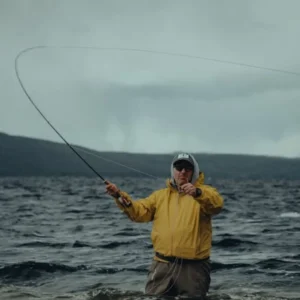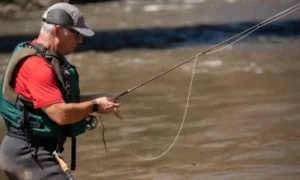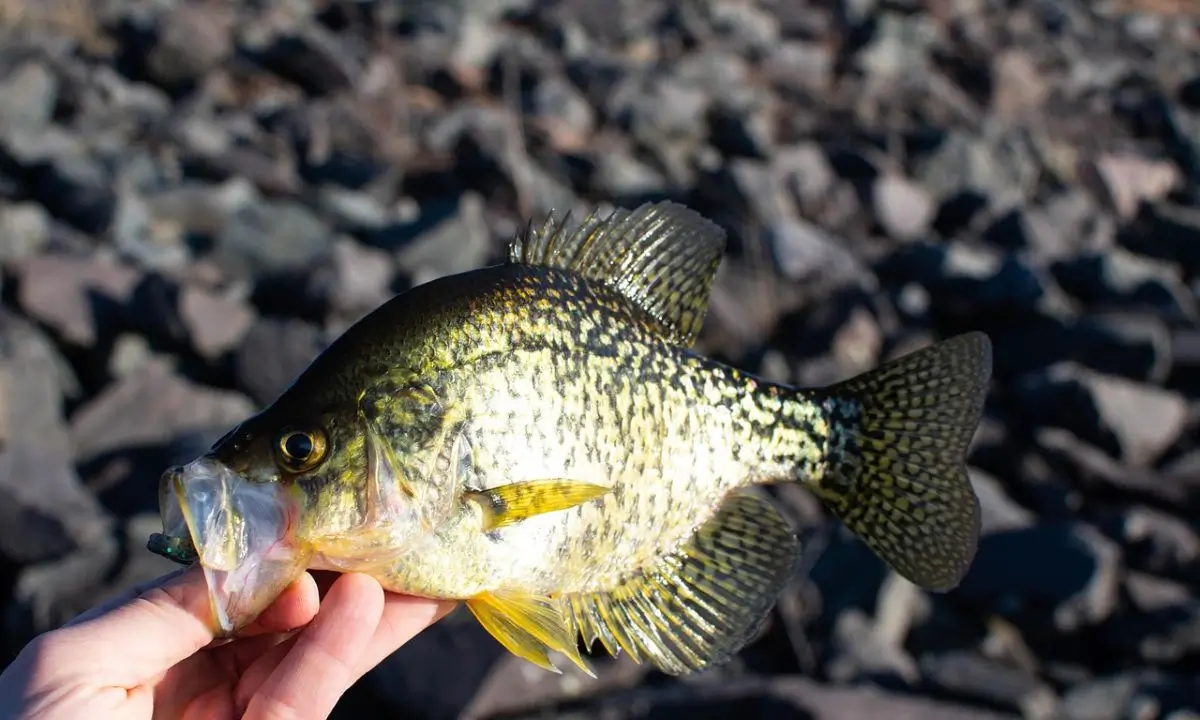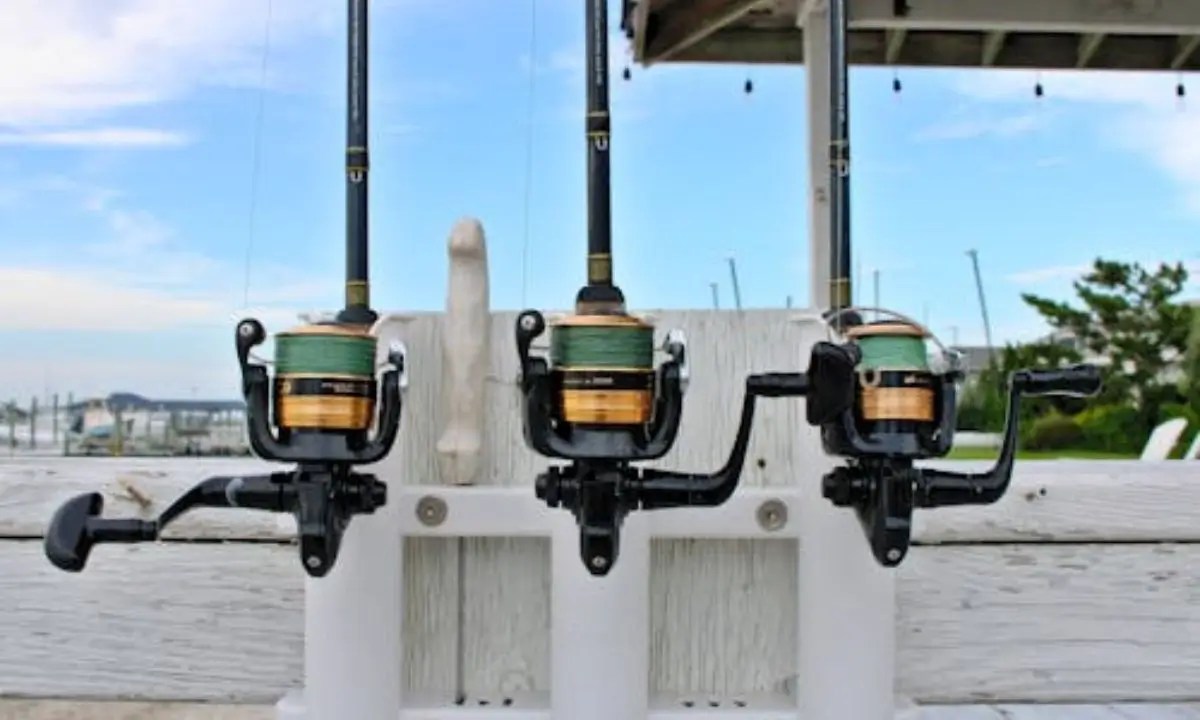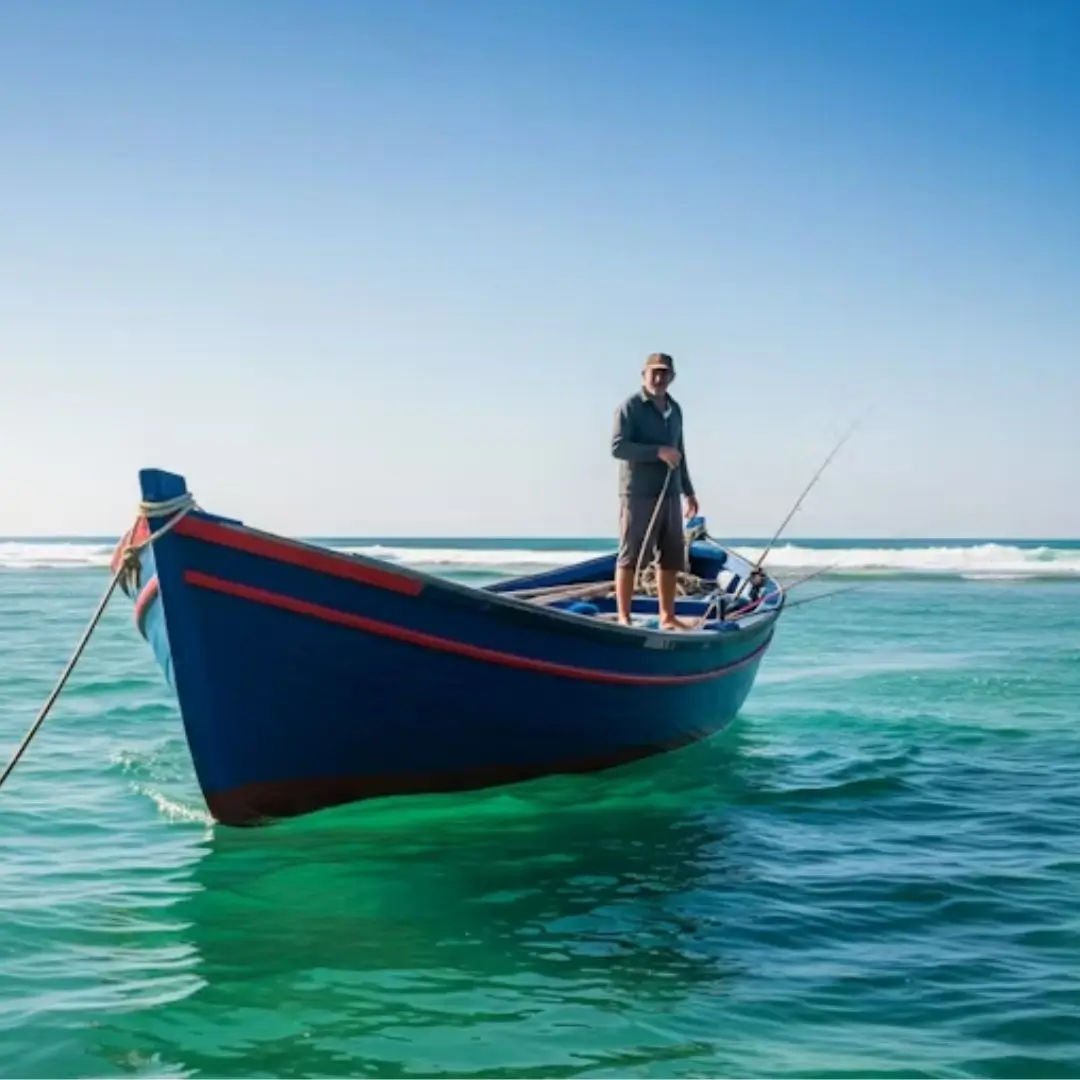The Fly Fishing Expo Denver 2025 is one of the biggest events for anglers, showcasing the latest fly-fishing gear, expert seminars, and live demos. It’s the perfect place for beginners and pros to learn new techniques, connect with Denver anglers, and explore modern fishing trends.
Introduction:
The fly-fishing-expo-Denver is more than just an event—it’s a gathering point for anglers who want to explore the latest fishing gear, sharpen their techniques, and connect with experts in the industry. For beginners, the expo offers a clear introduction to fly fishing through hands-on demos, fly tying workshops, and beginner-friendly seminars. Experienced anglers, on the other hand, gain insights into advanced strategies, 2025 fishing trends, and specialized gear designed for different waters.
What makes the Denver expo special is its mix of education and community. Whether you are curious about new fly rods, learning how to tie stronger knots, or exploring casting techniques, the event ensures you leave with more confidence and knowledge. For anyone passionate about fishing in Colorado or beyond, the Fly Fishing Expo Denver is the must-attend event of 2025. details Fly Fishing Spinning Rod
What is the Fly Fishing Expo Denver 2025?
The Fly Fishing Expo Denver is one of the biggest fishing trade shows in the United States. It brings together anglers, vendors, and fishing enthusiasts to explore the latest gear, attend live casting demonstrations, and join educational seminars. For many, it’s the best place to learn directly from professional guides and connect with the local Colorado fly fishing community.
What is a Fishing Reel Gear Ratio?
A fishing reel gear ratio is a simple number that tells you how many times the spool rotates every time you turn the handle once. For example, a 6.4:1 ratio means that one full turn of the handle spins the spool 6.4 times. This number directly affects how fast or slow your line is retrieved, which is crucial for different fishing techniques.
Understanding gear ratios helps beginners choose the right reel for their target fish and fishing style. A lower ratio (like 5.1:1–5.4:1) retrieves line slowly, giving more power for deep-diving crankbaits or heavy lures. A medium ratio (6.2:1–6.4:1) is versatile and perfect for most general fishing, like bass or trout. A high ratio (7.1:1 or higher) retrieves line quickly, ideal for fast techniques such as topwater or jerkbait fishing.
By knowing how gear ratios work, anglers can match their reel to their lure and water conditions, reducing line tangles, improving casting control, and increasing catch rates. For beginners, understanding this simple concept is one of the first steps toward successful and enjoyable fishing Line Last
When and Where Will the Fly Fishing Expo Denver Be Held?
The 2025 show will be hosted at the Gaylord Rockies Resort & Convention Center in Denver, Colorado. The official dates are February 21–23, 2025. This location is popular because it’s close to Denver International Airport, making it easy for both local and international visitors to attend.
Why Gear Ratio Matters for Beginners
For beginners, understanding fishing reel gear ratios is crucial for a smooth and enjoyable fishing experience. Choosing the wrong gear ratio can lead to frustrating results, such as poor casting control, tangled lines, or ineffective lure action.
A proper gear ratio helps with casting control, making it easier for new anglers to place their lure accurately. It also affects lure presentation—each lure is designed to move in a certain way, and the right gear ratio ensures it behaves naturally in the water, increasing your chances of catching fish.
Beginners also benefit because the correct gear ratio reduces line tangles, one of the most common problems for new anglers. By matching your reel’s speed to the type of lure and fishing technique, you can fish more efficiently and confidently.
Whether you are targeting bass in freshwater lakes or trout in streams, starting with an appropriate gear ratio makes learning techniques faster and less frustrating. For any beginner, understanding this simple concept is a key step toward improving skills, enjoying the sport, and catching more fish in 2025.
How Do You Get Tickets for the Denver Fly Fishing Show?
Tickets for the fly fishing expo Denver 2025 are available online through the official show website. Visitors can choose between single-day passes or full weekend passes. Prices usually vary depending on the number of days and access type, but buying tickets early is recommended since they often sell out quickly.
👉 Related keywords naturally included: fly fishing expo Denver tickets, fly fishing show Denver 2025 tickets price, fishing expo Denver.
Types of Gear Ratios Explained
Fishing reels come in three main gear ratio types: low, medium, and high. Each type has its own advantages depending on the lure, fish species, and fishing technique.
- Low Gear Ratio (5.1:1 – 5.4:1):
Low-ratio reels retrieve line slowly, providing more power and control. They are ideal for crankbaits, deep-diving lures, and situations where steady, consistent retrieval is needed. Beginners benefit from low ratios when fishing heavy lures or targeting bass in deeper water. - Medium Gear Ratio (6.2:1 – 6.4:1):
Medium ratios are versatile and perfect for beginners. They work well with most fishing styles, including bass and trout fishing, and are suitable for a wide range of lures. This type allows balanced speed and power, making it an all-rounder choice for anglers of all skill levels. - High Gear Ratio (7.1:1 – 8.1:1):
High-ratio reels retrieve line quickly, making them ideal for fast techniques such as jerkbait, frog fishing, and topwater lures. These reels help move lures faster and react quickly to fish strikes, but they require more control and experience.
Comparison Table – Gear Ratio vs Lure Type
| Gear Ratio | Best Lure Type | Beginner Friendly? |
| 5.1:1 – 5.4:1 | Crankbait, Deep Diving | ✅ Yes |
| 6.2:1 – 6.4:1 | All-rounder, Bass, Trout | ✅ Excellent |
| 7.1:1 – 8.1:1 | Jerkbait, Topwater, Frog | ⚠ Moderate |
By understanding these three types, beginners can select the right gear ratio for their specific fishing situation, improving casting control, lure presentation, and overall fishing success.
What Can You Expect at the Fly Fishing Expo?
The Denver Fly Fishing Show is more than just a marketplace. It’s a complete fishing experience with opportunities such as:
- Vendors & Exhibitors: Explore the latest rods, reels, lines, and accessories from leading brands.
- Casting Demonstrations: Learn from expert anglers how to improve your fly casting skills.
- Seminars & Workshops: Topics range from trout fishing tips in Colorado to fly tying lessons.
- Networking: Meet professional fishing guides, lodge owners, and other passionate fly fishers.
This makes the fly fishing expo gaylord event not only educational but also entertaining for both beginners and experienced anglers.
Why is Denver the Perfect Place for a Fly Fishing Expo?
Denver, Colorado, is often called a gateway to some of the best trout waters in the United States. Within just an hour’s drive, you’ll find world-class rivers and lakes such as the South Platte River, Blue River, and Clear Creek.
So when people ask, “Is Denver good for fly fishing?” The short answer is Yes! Denver is surrounded by excellent fishing opportunities, making it a natural choice for hosting the Colorado fly fishing expo. details Catch Boundary Water
Which Gear Ratio is Best for Beginners? (≈300 words)
For most beginners, the 6.4:1 gear ratio is considered the ideal starting point. This medium-speed ratio provides a perfect balance between line retrieval speed and torque, making it versatile for a variety of fishing techniques and lures. Unlike slow ratios, it doesn’t feel too sluggish, and unlike high ratios, it doesn’t become difficult to control.
With a 6.4:1 reel, beginners can easily fish for bass, trout, and inshore saltwater species. It works well with common lures like spinnerbaits, worms, and crankbaits, offering smooth retrieval without tangling the line. In Florida, where freshwater lakes and coastal waters offer diverse fishing opportunities, this ratio allows anglers to adapt to different conditions without switching reels constantly.
Example scenarios:
- Bass fishing in lakes: Retrieve spinnerbaits or crankbaits at a moderate pace for consistent action.
- Trout in streams: Smooth retrieval for small lures ensures natural movement and better bite chances.
- Inshore saltwater fishing: Works with light artificial baits targeting redfish, snook, or sea trout.
Overall, the 6.4:1 gear ratio is beginner-friendly, flexible, and reliable. It minimizes mistakes, reduces line tangles, and helps new anglers focus on learning casting techniques, lure control, and fish behavior. Starting with this ratio builds confidence and ensures a more enjoyable fishing experience in 2025.
What Happened to Trouts Fly Fishing in Denver?
If you’ve searched online, you may have seen people asking, “What happened to Trouts Fly Fishing in Denver?” Trouts is actually a well-known fly shop in Denver that continues to operate successfully. It has become a hub for the local fishing community and often partners with events like the Denver fly fishing expo. This shows the deep connection between the city’s fishing culture and the annual show.
What Makes the Denver Show Special Compared to Other Expos?
While there are fishing shows across the U.S., the fly fishing expo Denver Colorado stands out for three key reasons:
- Location – Denver is one of the top fishing destinations in the U.S.
- Vendors – The show attracts top global brands and local Colorado businesses.
- Community – It’s not just a show; it’s a gathering of passionate anglers sharing experiences.
For anyone serious about improving their fly fishing knowledge or simply exploring new gear, the Denver fly fishing expo is a must-attend event.
Common Mistakes Beginners Make
Many beginners struggle with fishing not because of lack of interest but due to common gear mistakes. Understanding these pitfalls can save time, frustration, and improve early success.
- Choosing a Gear Ratio That’s Too Fast: Beginners often pick high-speed reels thinking faster is better. This can lead to poor lure control, line tangles, and missed strikes, especially when using crankbaits or deep-diving lures.
- Ignoring the Drag System: Many anglers overlook adjusting the drag properly. A poorly set drag can snap lines during a fight or let fish escape, particularly when targeting strong species like bass or trout.
- Using the Wrong Reel for the Wrong Lure: Matching the reel to the lure type is critical. Using a high-speed reel for a slow-action lure often prevents natural movement, reducing bite chances.
Avoiding these mistakes ensures smoother fishing experiences. Beginners should start with a medium gear ratio, learn proper drag adjustments, and pair reels correctly with lures. This approach not only minimizes errors but also builds confidence and skill for long-term success in both freshwater and inshore fishing.
Best Techniques with Different Ratios
Understanding how different gear ratios affect retrieval speed is essential for selecting the right technique. Here’s how beginners can match their reels to effective fishing methods:
- Slow Retrieve (Low Gear Ratio 5.1:1 – 5.4:1):
Low-ratio reels are ideal for deep cranking and heavy lures. This slow, steady retrieve gives control, allowing beginners to keep the lure at the desired depth while targeting bass or deep-water species. - Moderate Retrieve (Medium Gear Ratio 6.2:1 – 6.4:1):
Medium-ratio reels are the most versatile. They work well for spinnerbaits, worms, and crankbaits. Beginners can maintain consistent lure action, improving bite chances in lakes or streams. This ratio balances speed and power, making it perfect for general freshwater fishing. - Fast Retrieve (High Gear Ratio 7.1:1 – 8.1:1):
High-ratio reels excel in jerkbait, frog fishing, and topwater techniques. Quick line retrieval helps create aggressive lure movements, ideal for exciting strikes. While beginners may need practice, this technique is excellent for active, surface-feeding fish.
By matching gear ratio to fishing technique, beginners can improve casting accuracy, maintain proper lure action, and enjoy higher success rates. Learning these retrieval methods builds confidence, reduces line tangles, and makes each fishing trip more productive and enjoyable.
Top Reel Recommendations for Beginners 2025
For beginners in 2025, choosing the right reel is as important as understanding gear ratios. The right reel ensures smooth line retrieval, proper lure action, and a more enjoyable fishing experience. Here are some top picks:
- Shimano SLX:
This reel combines durability with smooth performance. Its medium gear ratio makes it perfect for general freshwater fishing, including bass and trout. Beginners benefit from easy drag adjustment and reliable line control. - Daiwa Tatula:
Known for strength and precision, the Daiwa Tatula excels in both freshwater and light inshore fishing. Its balanced gear ratio allows effective retrieval for spinnerbaits, crankbaits, and light jerkbaits. Beginners will appreciate its ergonomic design and ease of use. - Abu Garcia Black Max:
The Black Max is beginner-friendly with a versatile gear ratio suitable for multiple fishing techniques. Its smooth drag system and lightweight design make it ideal for all-day fishing trips targeting bass, trout, or inshore species.
All three reels offer user-friendly features for beginners, including comfortable handles, reliable drag systems, and smooth performance. By selecting one of these recommended reels, new anglers can focus on improving casting, mastering retrieval techniques, and enjoying successful fishing trips in 2025.
Techniques and Gear for Fly Fishing Striped Bass
When it comes to fly fishing for striped bass, choosing the right techniques and gear makes all the difference. Unlike other freshwater or saltwater fishing styles, fly fishing relies heavily on precision, presentation, and adapting to conditions. Let’s break down the essential techniques and the gear setup you need to maximize your success.
1. Essential Gear Setup for Striped Bass Fly Fishing
To target striped bass effectively, you need a balanced fly-fishing setup designed to handle their size and strength.
- Fly Rods: A 9- or 10-weight fly rod is the most popular choice. It gives enough backbone to cast larger flies and control powerful stripers. For windy coastal areas, a fast-action rod is highly recommended.
- Fly Reels: Choose a large-arbor reel with a reliable drag system. Since striped bass fight hard, a reel with smooth drag helps protect your line and reduces the chance of break-offs during long runs.
- Fly Lines: Floating lines work in shallow waters, while intermediate or sinking lines are effective when bass hold deeper. In tidal waters, full sinking lines help reach stripers feeding near the bottom.
- Leaders & Tippets: A 20–30 lb fluorocarbon leader is common, as stripers are strong and sharp rocks or oyster beds can easily break weaker lines.
2. Best Flies for Striped Bass
Your choice of flies should match the environment and the feeding habits of striped bass. Some of the most effective patterns include:
- Closure Minnows – Perfect for imitating baitfish.
- Deceivers – A versatile choice that works in many conditions.
- Gurgler Patterns – Great for topwater action when stripers are feeding near the surface.
- Sand Eel and Shrimp Patterns – Effective in estuaries where stripers chase small prey.
Tip: Make sure the size and color of your fly closely resemble the baitfish found in the water.
3. Casting and Retrieval Techniques
- Double Haul Casting: Because larger flies are harder to cast, the double haul technique helps deliver long, accurate casts even in windy conditions.
- Strip Retrieve: Striped bass often respond to quick, erratic strips that mimic a fleeing baitfish. Mix up your retrieval speed to see what triggers a strike.
- Pause-and-Go Technique: Pausing between strips can be highly effective, since striped bass often hit the fly right when it comes to a sudden stop.
- Sight Casting: In clear shallow waters, you can spot cruising stripers and cast directly ahead of them for an exciting challenge.
4. Reading Water and Conditions
Striped bass are opportunistic feeders, and learning to “read” the water helps you know where to present your fly.
- Tidal Currents: Striped bass often feed during moving tides, especially near structure like jetties, rocks, and river mouths.
- Baitfish Activity: Watch for birds diving or schools of baitfish breaking the surface—this is a clear sign stripers are feeding below.
- Structure Fishing: Areas like bridge pilings, docks, and drop-offs are prime spots where striped bass wait to ambush their prey.
5. Pro Tips for Success
- Carry different fly lines—floating, intermediate, and sinking—so you can adjust to varying water depths.
- Fish during low-light conditions—early morning and dusk are prime feeding times.
- Don’t hesitate to experiment with fly sizes. Sometimes smaller flies trigger more strikes than large ones.
- Stay stealthy in shallow flats; striped bass can be easily spooked.
Pros & Cons Summary Table
| Gear Ratio | Pros | Cons | Best For |
| Low (5.1:1 – 5.4:1) | Strong torque, better control for heavy lures, reduces line tangle | Slow retrieval, less versatile | Deep-diving crankbaits, bass fishing |
| Medium (6.2:1 – 6.4:1) | Versatile, balanced speed & power, beginner-friendly | Not specialized for very fast or very slow techniques | All-rounder, bass, trout |
| High (7.1:1 – 8.1:1) | Fast retrieval, excellent for topwater & jerkbait, aggressive action | Harder to control for beginners, line tangles possible | Jerkbait, frog fishing, topwater |
Summary:
- Low ratios: Best for power & control, perfect for heavy lures.
- Medium ratios: Ideal starting point for beginners; flexible for multiple techniques.
- High ratios: Great for fast-action lures but require skill.
This table helps beginners quickly compare gear ratios and make informed choices based on their fishing style, target species, and skill level.
Best Seasons, Locations, and Tips for Fly Fishing Striped Bass
Knowing the right time and place to fish for striped bass can make your fly fishing trip much more successful. Let’s explore the best seasons, top locations, and practical tips that will help you catch more stripers in both freshwater and saltwater.
When is the Best Time for Striped Bass Fly Fishing?
The peak season for striped bass fly fishing varies depending on the region:
- Spring (March–May): Striped bass move closer to coastal rivers and estuaries to spawn. This is one of the best times for freshwater flats fishing.
- Summer (June–August): Bass often move offshore or into deeper waters to escape the heat. Using sinking lines and larger baitfish patterns is effective.
- Fall (September–November): Cooler waters bring stripers back to estuaries and nearshore areas. This is prime time for topwater action.
- Winter (December–February): Fishing slows down but can still be productive in tidal areas with proper gear.
Tip: Keep an eye on water temperature and baitfish activity, as these directly affect feeding patterns. more info Big Fish Boat
Top Locations for Striped Bass Fly Fishing
Different regions in the U.S. offer world-class striped bass fly fishing opportunities:
- Hudson River, New York – Known for trophy-sized stripers and accessible flats.
- Chesapeake Bay, Maryland/Virginia – Excellent for both fly and conventional anglers.
- Connecticut River, New England – Famous for scenic river fishing and large schools of stripers.
- Delaware Bay, New Jersey – Popular for spring and fall migrations.
- California Coast – A great destination for nearshore and saltwater flats fly fishing.
💡 Tip: When targeting stripers, always research local tidal schedules, structure hotspots, and recent fishing reports.
How to Read Water for Striped Bass
Striped bass are ambush predators, so understanding their behavior is key:
- Look for Baitfish: Groups of small fish usually signal that striped bass are actively feeding nearby.
- Observe Birds: Diving birds usually signal active feeding zones.
- Identify Structure: Pilings, rocks, channels, and drop-offs are prime areas for stripers to strike.
Fly Fishing Etiquette & Safety Tips
- Always respect other anglers and maintain proper distance on flats or near docks.
- Handle fish carefully and practice catch-and-release whenever possible.
- Check local regulations regarding size limits, seasonal closures, and restricted areas.
- Wear sun protection and stay hydrated, especially during long trips on sunny flats.
Why Attend the Fly Fishing Expo Denver 2025 for Striped Bass Tips?
The fly fishing expo denver isn’t just about buying gear—it’s a learning hub for anglers of all levels:
- Workshops & Seminars: Learn advanced casting techniques, fly tying, and local striped bass strategies.
- Meet Pro Anglers: Ask questions directly to experts who fish Colorado and U.S. waters regularly.
- Try Gear Before Buying: Test rods, reels, and flies to find the perfect setup for your style.
Attending the expo gives you insider knowledge that can save time and increase your catch success during the season.
Quick Tips to Maximize Your Striped Bass Fly Fishing
- Use multiple fly patterns and switch colors based on light and water conditions.
- Fish during early morning or late evening for more aggressive feeding behavior.
- Keep your casting accurate but stealthy—striped bass are easily spooked in shallow water.
- Join online or local fishing groups to keep up with hotspot locations and seasonal shifts.
Conclusion
The Fly Fishing Expo Denver 2025 is the perfect opportunity for both beginners and experienced anglers to learn, explore, and enjoy the latest in fishing gear and techniques. Understanding gear ratios, choosing the right reels, and applying proper fishing methods can significantly improve your success on the water.
By following this guide, beginners can confidently navigate the expo, participate in workshops, and make informed choices for their fishing adventures. Whether targeting bass, trout, or exploring inshore fishing, this comprehensive guide ensures you are well-prepared to make the most of the 2025 Fly Fishing Expo in Denver.
✍️ Written by Jihad | profishingbyjihad.com
What are the dates and location for the 2025 Fly Fishing Expo in Denver?
The 2025 Fly Fishing Expo will be held from February 21 to 23, 2025, at the Gaylord Rockies Resort & Convention Center, located at 6700 North Gaylord Rockies Boulevard, Aurora, CO 80019.
How can I purchase tickets for the event?
Tickets can be purchased through the official Fly Fishing Show website. Options include single-day passes or full weekend passes. Early bird discounts may be available.
Will there be any film screenings during the expo?
Yes, the International Fly Fishing Film Festival (IF4) will be screening on Friday, February 21 at 6:30 PM. Tickets are $20 at the door or $17 in advance.
Are there any educational sessions or workshops available?
Absolutely! The Fly Fishing Show Learning Center, hosted by Fly Fishers International (FFI), offers free fly casting, fly tying, and knot-tying instruction throughout the event. Sessions are available on a first-come, first-served basis.
Is there an opportunity to win prizes at the expo?
Yes, attendees have a chance to win part of the $100,000 in door prizes available during the event. Prizes include gear, trips, and more.
What types of exhibitors will be present?
The expo will feature over 175 exhibitors, including top fishing brands, guide services, lodges, and conservation organizations. It’s an excellent opportunity to explore the latest gear and services in the fly fishing industry.
Are there accommodations available at or near the venue?
Yes, the Gaylord Rockies Resort & Convention Center offers on-site accommodations. Additionally, there are various hotels and lodging options in the Aurora area to suit different preferences and budgets.




